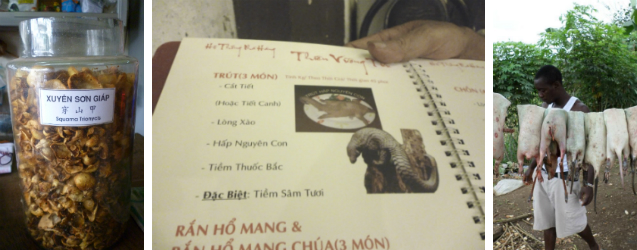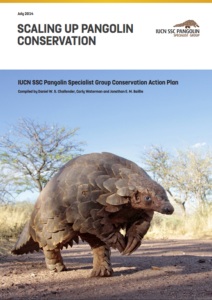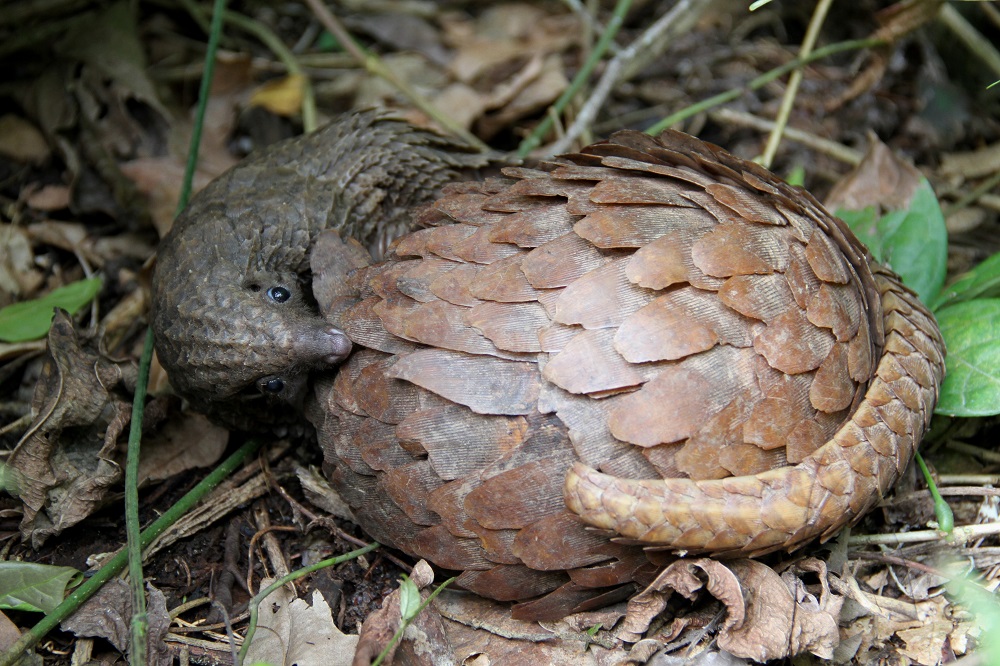© Guy Colborne | guycolborne.photoshelter.com
Saturday 20th January 2016 is the fifth World Pangolin Day! This means people across expanding pockets of the globe will be celebrating the eight extant species of pangolins, which are also known as scaly anteaters, and which characteristically roll up into a ball when threatened. If anything like previous years, this will involve the holding of workshops on pangolin conservation, using national radio broadcasts to tell people about the animals and the threats they face, baking pangolin themed cakes, ‘pumping it for pangolins’, making infographics to share online, and building snow pangolins – and all to raise awareness of, and celebrate, these truly unique, fascinating, and increasingly iconic animals.
All these efforts will hopefully contribute positively to the growing global awareness of pangolins and the trouble they are in, both in Africa and Asia. The main threats to pangolins in Asia are poaching and illegal hunting driven largely by an illicit international trade in the animals and their meat and scales, and which is characteristically destined for China and Vietnam. Here, the meat is consumed as a luxury dish in expensive restaurants and the scales are used in medicines to cure a range of medical problems – including helping lactating mothers to secrete milk, to cure skins diseases and to improve blood circulation. In Africa the main threats are again poaching and illicit hunting of the animals, which are eaten as bushmeat and their scales used in a wide variety of ethno-medicinal and spiritual uses, as well as a developing inter-continental trade in African pangolin parts, mainly scales, to Asian markets. As a result of these threats, pangolin populations globally are in decline and all eight species are now threatened with extinction.

Scales for sale and pangolins on the menu in Asia (© Dan Challender) and pangolin bush meat in Africa (© African Pangolin Working Group).
Thankfully, there are reasons to be optimistic about the future. For me, World Pangolin Day is always a day which makes me think about and question what has been achieved in pangolin conservation in the last year and I’m pleased to say that in the last 12 months there have been some positives. A major highlight was the launching of The Fondation Segré Pangolin Initiative. This is the biggest ever pangolin conservation project funded to date, and which focuses on tackling direct threats to pangolins at priority sites in Cameroon and Thailand and by initiating research into demand for pangolin products in China, and hopefully this symbols the start of concerted investment in pangolin conservation on a global scale. Another highlight was the First Pangolin Range States meeting, hosted by the governments of Vietnam and the United States, which saw many different pangolin range states meet for three days in Da Nang, Vietnam, to discuss and plan conservation responses to the global pangolin crisis.
 This year, more so than others, is even more reflective, as it is four years since the IUCN SSC Pangolin Specialist Group was reformed (four years = one IUCN quadrennium) and so I’ve also been thinking about what the group has achieved since 2012. Thankfully, I can look back and think we’ve made good progress in advancing the conservation of pangolins. A sample of successes achieved during this time include revising the conservation status of pangolins on the IUCN Red List of Threatened SpeciesTM, launching a global conservation action plan for pangolins ‘Scaling Up Pangolin Conservation’, taking the latest information on the scale of illegal pangolin trade to CITES meetings, conducting research in Africa and Asia on uses and demand for pangolin parts as well as on pangolin behaviour, ecology and biology, launching a working group to develop monitoring methods for pangolins, completing the rescue, rehabilitation and release of pangolins in Africa and Asia, advising United for Wildlife on pangolin conservation, and raising awareness of the threats pangolins face through print, broadcast, and social media.
This year, more so than others, is even more reflective, as it is four years since the IUCN SSC Pangolin Specialist Group was reformed (four years = one IUCN quadrennium) and so I’ve also been thinking about what the group has achieved since 2012. Thankfully, I can look back and think we’ve made good progress in advancing the conservation of pangolins. A sample of successes achieved during this time include revising the conservation status of pangolins on the IUCN Red List of Threatened SpeciesTM, launching a global conservation action plan for pangolins ‘Scaling Up Pangolin Conservation’, taking the latest information on the scale of illegal pangolin trade to CITES meetings, conducting research in Africa and Asia on uses and demand for pangolin parts as well as on pangolin behaviour, ecology and biology, launching a working group to develop monitoring methods for pangolins, completing the rescue, rehabilitation and release of pangolins in Africa and Asia, advising United for Wildlife on pangolin conservation, and raising awareness of the threats pangolins face through print, broadcast, and social media.
However, despite laying these foundations, this is only the start and there is much more to do to secure the conservation of pangolins globally. This is reflected in the Pangolin Specialist Group Action Plan which recognises that solving the pangolin crisis is complex, will not be solved by silver bullet solutions, but commands a multi-faceted and co-ordinated response. Thankfully, we’ve seen such collaboration over the past 12 months, and indeed the last four years. This of course includes raising awareness, and though it won’t solve everything, it can hopefully contribute to the pangolin’s cause in a positive manner. So, please do your bit, celebrate World Pangolin Day 2016, and help us put a spotlight on the animals and scale up pangolin conservation.
by Dan Challender, Co-Chair of the IUCN SSC Pangolin Specialist Group



